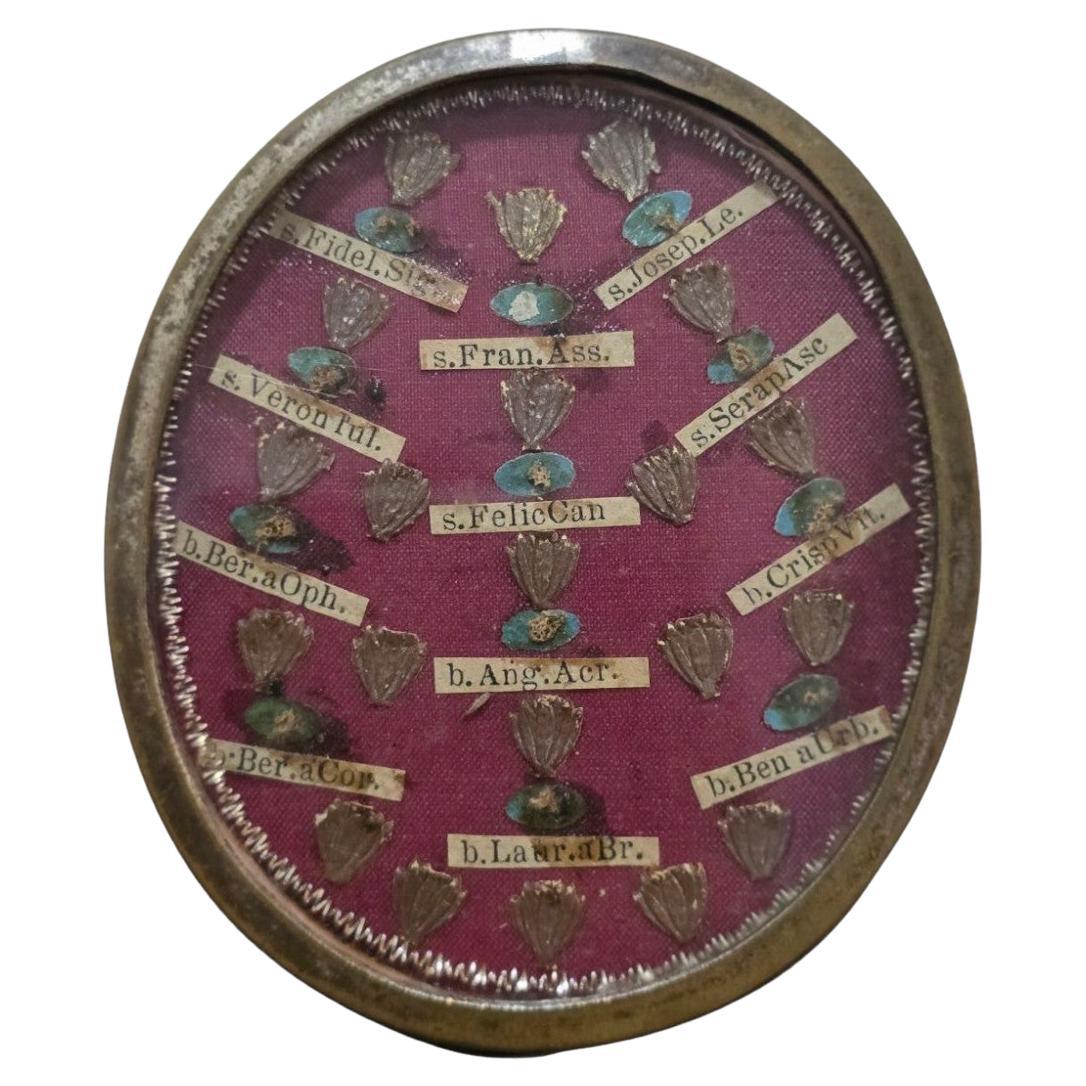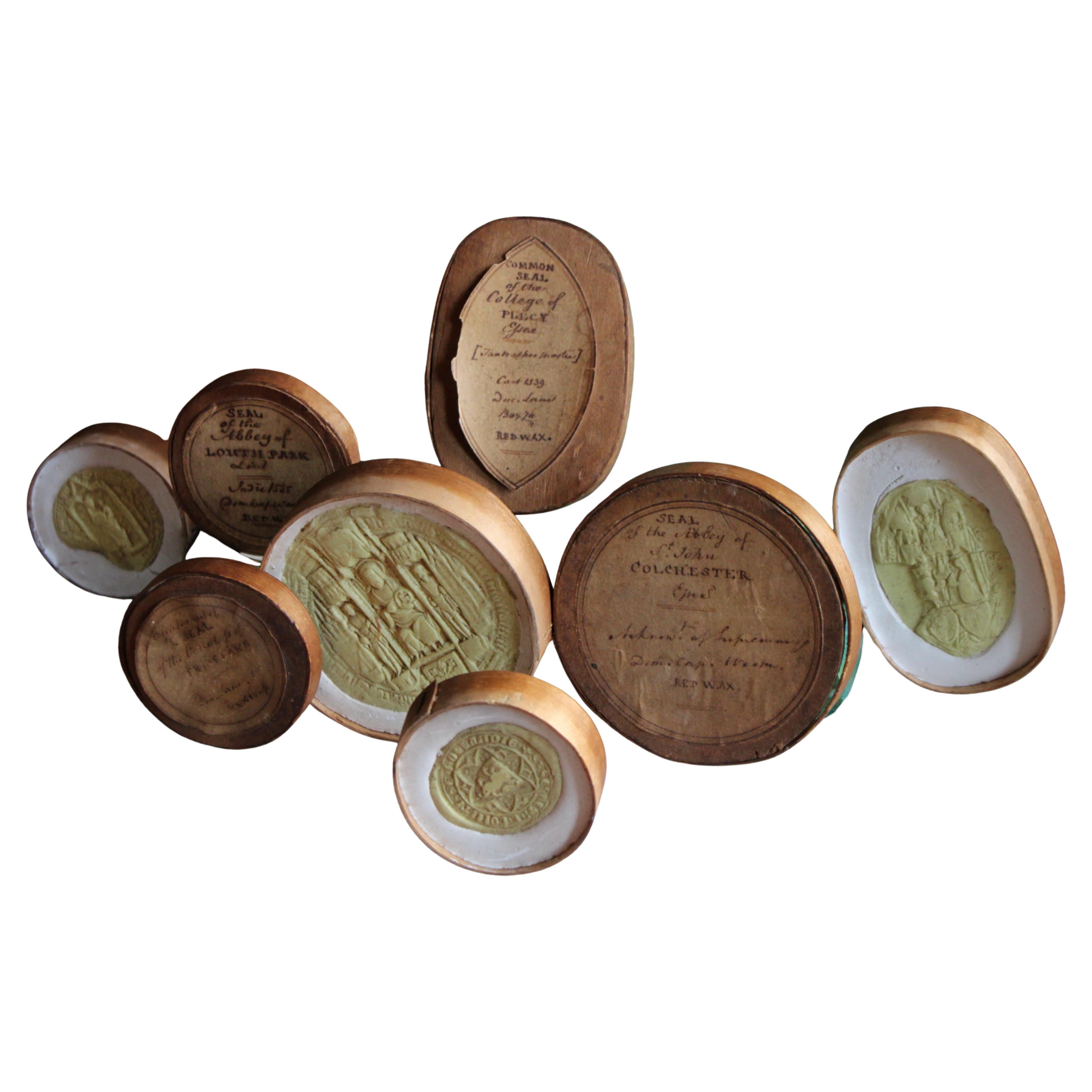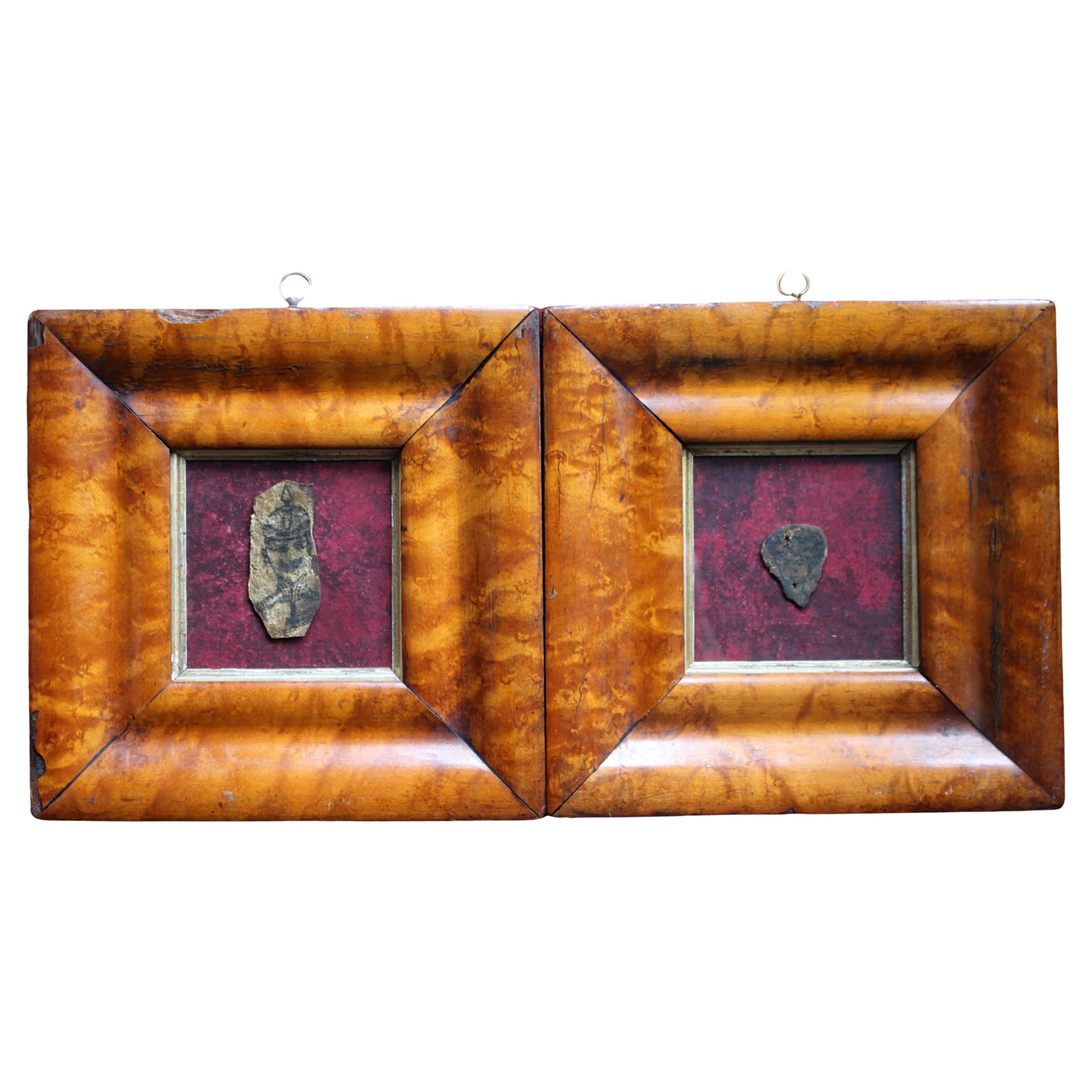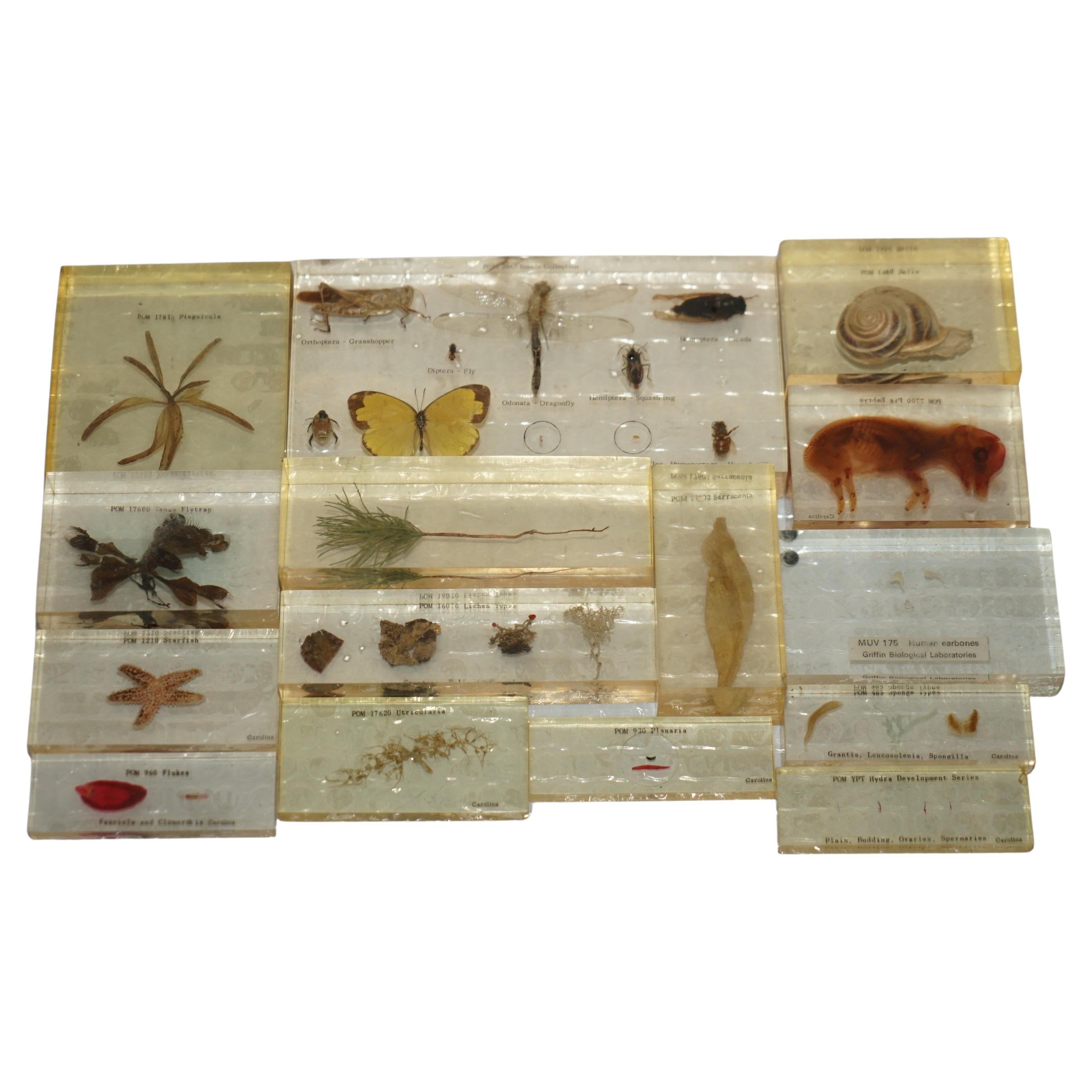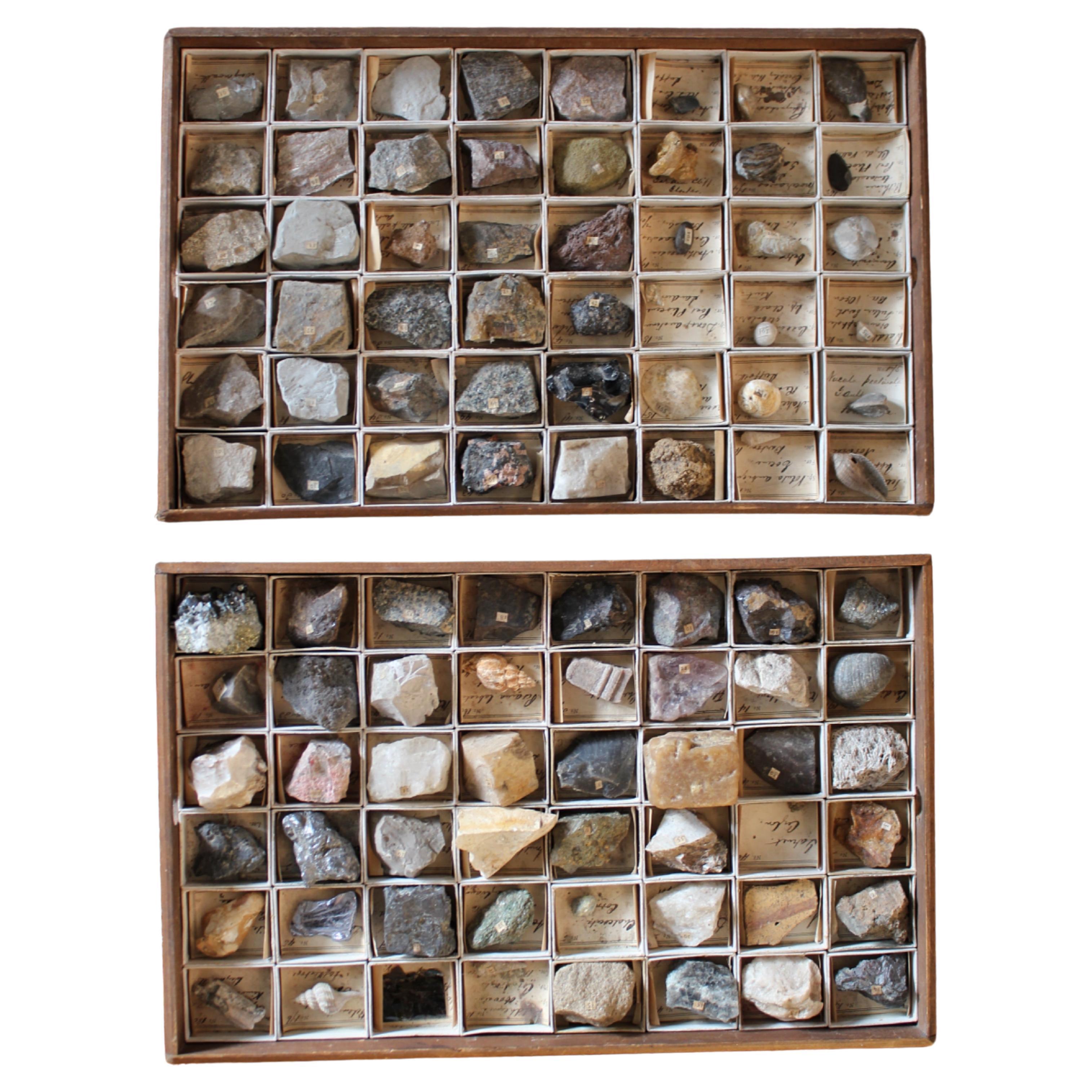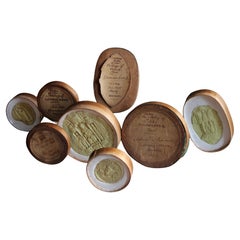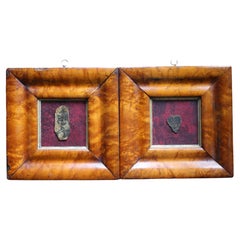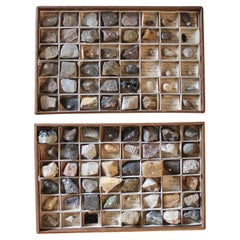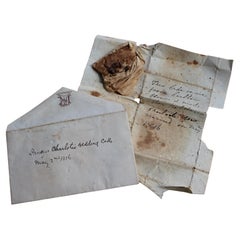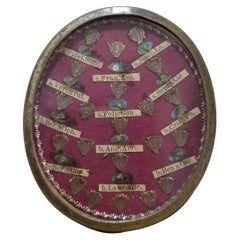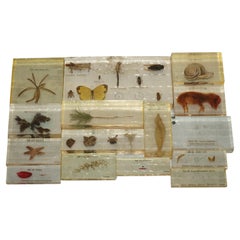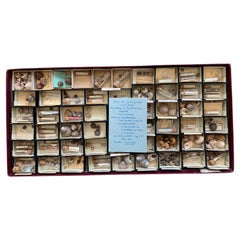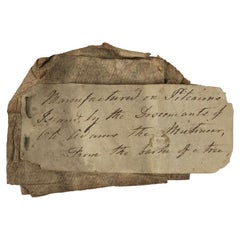Items Similar to 19th Century Mary & David Livingston Memorial Relic Heart Buried Beneath 1896
Want more images or videos?
Request additional images or videos from the seller
1 of 16
19th Century Mary & David Livingston Memorial Relic Heart Buried Beneath 1896
$3,359.50per set
£2,495per set
€2,942.14per set
CA$4,654.14per set
A$5,219.92per set
CHF 2,733.59per set
MX$63,427.16per set
NOK 34,712.05per set
SEK 32,909.47per set
DKK 21,961.57per set
About the Item
A very odd Victorian collection of curiosity, a section of the tree that the Scottish physician, congregationalist and pioneer Christian missionary David Livingston was buried under and a flower from the grave of his wife Mary Livingston, both items framed and glazed.
It's believed that Livingston died from Malaria on the 1st May 1873, in Chief Chitambo's village at Chipundu (today in Chitambo District), near the edge of the Bangweulu Swamps in Zambia. His body was embalmed and his heart was buried there under a mpundu tree by his followers. His body was shipped backed to England along with his diary and was later buried at Westminster Abbey.
Our section of the mpundu tree bears a paper label certified by a Harry Johnson a Christened Harold, always known as Harry. Missionary with the London Missionary Society. Stationed in British Central Africa, mainly at Kambole, Zambia, between 1895-1905. Chairman of Central African Committee responsible for day to day administration of mission stations and the Lake steamer (the Good News).
The tree had fallen to decay by 1899 and was replaced with a monument, another section of the tree is housed at The Hunterian Museum Glasgow, it was originally given to his grandson, Hubert Wilson, who donated it to Anderson College where Livingstone studied medicine. It was displayed there for many years before being transferred to the Hunterian Museum in 1992 when the Anderson College building was redeveloped.
Mary Livingston also died in Africa, she fell ill with malaria on 22 April at Shupanga. Her condition worsened despite medical attention from her husband, and she died on 27 April. Mary is buried in Chupanga, on the bank of the Zambezi River. The flower from her grave is frame and glazed certified again by Harry Johnson, Lake Tanganyika, Central Africa, 1896-1906
Both frames 17/12/1.5cm
- Dimensions:Height: 4.73 in (12 cm)Width: 6.7 in (17 cm)Depth: 0.6 in (1.5 cm)
- Sold As:Set of 2
- Materials and Techniques:
- Place of Origin:Zambia
- Period:
- Date of Manufacture:1896
- Condition:Wear consistent with age and use.
- Seller Location:Lowestoft, GB
- Reference Number:1stDibs: LU4612144965702
About the Seller
5.0
Platinum Seller
Premium sellers with a 4.7+ rating and 24-hour response times
Established in 2013
1stDibs seller since 2019
198 sales on 1stDibs
Typical response time: <1 hour
- ShippingRetrieving quote...Shipping from: Lowestoft, United Kingdom
- Return Policy
Authenticity Guarantee
In the unlikely event there’s an issue with an item’s authenticity, contact us within 1 year for a full refund. DetailsMoney-Back Guarantee
If your item is not as described, is damaged in transit, or does not arrive, contact us within 7 days for a full refund. Details24-Hour Cancellation
You have a 24-hour grace period in which to reconsider your purchase, with no questions asked.Vetted Professional Sellers
Our world-class sellers must adhere to strict standards for service and quality, maintaining the integrity of our listings.Price-Match Guarantee
If you find that a seller listed the same item for a lower price elsewhere, we’ll match it.Trusted Global Delivery
Our best-in-class carrier network provides specialized shipping options worldwide, including custom delivery.More From This Seller
View AllCollection of Late 18th Century English Wax & Plaster Abbey & College Seals
Located in Lowestoft, GB
A collection of four late 18th century replica wax seals, encased in plaster and housed in softwood boxes. They also retain their original pointed oval and circular hand written labe...
Category
Antique Late 18th Century English Religious Items
Materials
Plaster, Boxwood
Rare Pair of Late 19th Century Tattoo Specimens From A French Sailor Curiosity
Located in Lowestoft, GB
A very odd and rare pair of preserved human tattoos, believed to be from a French sailor. Depicting a Prussian solider and a young lady. Later housed and mounted in period maple fram...
Category
Antique Late 19th Century European Nautical Objects
Materials
Natural Fiber, Glass, Maple
Late 19th C Gregory Bottley Scientific Collection of Mineral Fossils Shell
Located in Lowestoft, GB
A good collection of Gregory Bottley mineral, fossils and shell all contained in there original teak trays and card board sleeves.
Each specimen has its original hand written and nu...
Category
Antique Late 19th Century English Late Victorian Scientific Instruments
Materials
Natural Fiber, Hardwood
A Piece of Cake from Princess Charlotte's Wedding to Prince Leopold 1816 Curio
Located in Lowestoft, GB
A piece of the wedding cake from Princess Charlotte's Wedding to Prince Leopold of Saxe-Coburg-Saalfeld on 2 May 1816 at Carlton House in London.
The cake segments sit within a clo...
Category
Antique Early 19th Century English Historical Memorabilia
Materials
Natural Fiber, Paper
Late 19th C Memento Mori Calligraphy In memory of Maria Arthur Manchip Died 1899
Located in Lowestoft, GB
A fantastically decorative pen and ink calligraphy composition celebrating the life of a Maria Arthur Manchip who dies 1899.
On paper, in a gl...
Category
Antique Late 19th Century English Late Victorian Paintings
Materials
Glass, Wood, Paper
Early 20th Century Travelling Jewellers Precious Stone Samples, T.G.Woods
Located in Lowestoft, GB
A glazed sample case of precious stones, the collection of 12 gilt tins house a range of uncut stone samples all with their original hand penned labels. Among them is a rough diamond, Indian rubys...
Category
Early 20th Century British Edwardian Collectible Jewelry
Materials
Tin
You May Also Like
Large Reliquary with Relics of Saints – 18th Century
Located in Madrid, ES
Magnificent 18th-century silver-plated reliquary, oval in shape and featuring meticulous ornamentation. Inside, it houses numerous relics of saints, carefully arranged and protected ...
Category
Antique 18th Century European Baroque Religious Items
Materials
Silver Plate
RARE SUITE OF ORIGINAL NATURAL HiSTORY MUSEUM CASED IN PERSPEX SPECIMENS
Located in West Sussex, Pulborough
Royal House Antiques
Royal House Antiques is delighted to offer for this amazing suite of original natural history museum cased specimens
A very rare find, these are old examples and some very interesting pieces, the list is as follows
1:- POM 17615 PINGUICULA
2:- POM 17600 VENUS FLYTRAP...
Category
20th Century English Victorian Natural Specimens
Materials
Plastic
Curiosity Cabinet Naturalism Collection of Shell Circa 1900
Located in Beuzevillette, FR
Very interesting set of shells collected by an amateur between the end of the 19th century and the beginning of the 20th century. The shells are classified by size and age either in ...
Category
Early 20th Century French Nautical Objects
Materials
Shell
A relic from the family of Bounty Mutineer John Adams: documented piece of Bark
Located in Lymington, Hampshire
A relic from the family of Bounty Mutineer John Adams: An exceptionally rare documented piece of Bark Cloth from the Pitcairn Islands, with a fragment of paper pinned to it stating ‘Manufactured at Pitcairn’s Island, by the descendants of John Adams the Mutineer, from the bark of a tree.’
Provenance: Private collection, Hampshire
For similar examples see the collection of the British Museum (Oc1937,0308.1 and Oc1937,0308.2) each with the same handwriting as the example offered here, but signed ‘H. Porter’ and dated 1837 and another in the National Martime Museum, Greenwich.
John Adams (1767-1829)
John Adams (known as Alexander Smith) was the last survivor of the Bounty Mutineers, the disaffected crewmen, who, led by acting-Lieutenant Fletcher Christian, seized control of the ship from their captain, Lieutenant William Bligh, and set him and eighteen loyalists adrift in the ship’s open launch.
After a sojourn in Tahiti, Christian, the remaining mutineers and some native Tahitians, mainly women forcibly abducted, left on 22nd September 1799 in search of safe haven. He then formed the idea of settling on Pitcairn Island, far to the east of Tahiti; the island had been reported in 1767, but its exact location was never verified. After months of searching, Christian rediscovered the island on 15 January 1790, 188 nautical miles east of its recorded position. This longitudinal error contributed to the mutineers’ decision to settle on Pitcairn in the hope they would be undetected. On arrival the Bounty was unloaded and stripped of most of its masts and spars, for use on the island. It was set ablaze and destroyed on 23rd January 1790.
Although the settlers were able to survive by farming and fishing, the initial period of settlement was marked by serious tensions among the settlers. Alcoholism, murder, disease and other ills had taken the lives of most of the mutineers and Tahitian men. John Adams, Ned Young, and Matthew Quintal were the last three mutineers surviving in 1799 when the thuggish Quintal, while drunk, reportedly threatened to kill the entire community if he could not have Fletcher Christian’s widow as his own consort, and in response Adams and Young lured him to Young’s house and killed him with a hatchet. Having taken effective control of the 19-member strong colony after the 1793 massacre, Adams and Young then turned to the Scriptures using the ship’s Bible as their guide for a new and peaceful society. As a result, Adams and Young embraced Christianity and taught the children to read and write using the Bible. Young eventually died of an asthmatic infection in 1800, but Adams continued his work of educating the women and children. The Pitcairners also converted to Christianity. The Pitcairners would later convert from their existing form of Christianity to Adventism after a successful Adventist mission in the 1890s.
The American sailing ship Topaz was the first to rediscover Pitcairn in 1808. Adams was eventually granted amnesty for the mutiny...
Category
Antique 19th Century British Historical Memorabilia
Materials
Paper
Set of Old Bound Books from 19th Century
Located in Beuzevillette, FR
Set of old religious books dating from the 19th century. From an old protestant library near Le Havre in France. These beautiful books are perfect to fill a nice library. Sizes may v...
Category
Antique 19th Century French Books
Materials
Leather, Paper
18th Century French Reliquaries
Located in Dallas, TX
Set of three 18th century French Reliquaries.
Carved wood with metal repousse over the wood
Each piece contains the original Latin pages framed in o...
Category
Antique Early 18th Century French French Provincial Religious Items
Materials
Metal
$6,720 / set
More Ways To Browse
Heart Display
Relic Antique
Bank Building
Wilson Antique
Antique Glass Bank
Medical Collectibles
Medical Curiosities
Antique Medical Collectibles
Victorian Medicine
Christian Relic
Voting Box
Antique Knife Sheath
Memorabilia Queen Elizabeth Ii
Peugeot Coffee
Tree Topper
Wooden Cash Register
1950 Vintage Christmas Ornaments
Antique Beer Memorabilia
